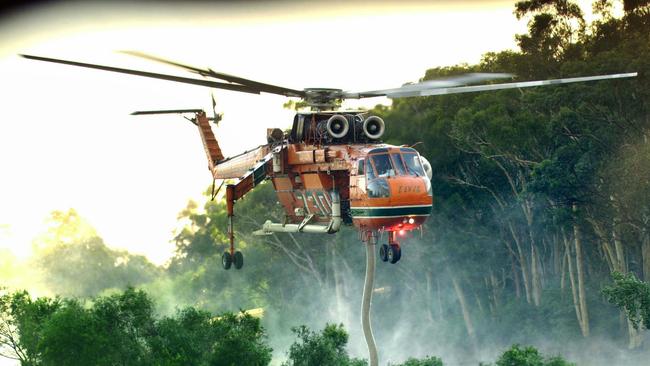Finding cash for aerial firefighting a constant battle
With the early onset of what is already a catastrophic fire season, it’s timely to take a look at aerial firefighting in Australia.

With the early onset of what is already a catastrophic fire season, it’s timely to take a look at aerial firefighting in Australia. Australia was late to the game.
The first aerial firefighting activity in Australia was a couple of water drops by Piper Pawnee crop dusters in 1967. Now, more than 50 years on, Australia-wide aerial firefighting operations are co-ordinated by the National Aerial Firefighting Centre, based in Melbourne.
Most assets are leased from private operators with varying capabilities. The work is largely seasonal and Australia falls short of being self-sufficient. The biggest and most experienced cohort of operators is in the US. Having fire seasons six months apart allows us to import assets and operators in the US off-season.
The vernacular of aerial firefighters is a closely related to military parlance. Call signs like “bird dog” and “bomber”, terms like airborne strategic intelligence and reconnaissance, and interoperability are peppered throughout the lexicon. This is with good reason. Aerial assets integrate with boots on the ground and the whole show is co-ordinated from a loitering aircraft above, much like forward air controllers used to mark targets and carry out bomb damage assessment for the F4 bombers in Vietnam.
At the publicly visible end, think of “Elvis”, the huge, orange Ericsson Aircrane and, back in Australia for another season, the DC10, a retired airliner that used to carry 320 passengers on international routes. The NAFC can call on about 130 different aircraft during the season. About half are helicopters and the other half fixed wing, of all shapes and sizes. Loads vary from a large “bambi bucket” of water to the DC10’s 45,000 litres that can be spread in a swath 90m wide by 1.6km long. Loads can be water or, more commonly, fire retardant, that ubiquitous dusting of red snow that we so often see on the TV news.
Not so obvious to the public are the other aerial activities: rappelling of fire fighters from hovering helicopters, single engine Cessnas with observers radioing new outbreaks, the air co-ordinator, often in a Learjet, loitering high over the fire calling in assets and reporting on results. There are even occasions when aircraft make precision drops of incendiaries to start firebreaks, a technique pioneered in Australia many years ago. Another Australian innovation is the line scanner. Learjets, with an infra-red scanner mounted under the wing, can reach a fire quickly, and rapidly datalink to the ground images of fires and surrounding terrain.
Aerial firefighting will not solve our bushfire problems. It is a highly effective, yet very expensive, component of a system that is, on the ground, largely manned by brave and selfless volunteers. Funding is a constant fight, with a mix of state and federal funds.
The annual federal contribution of about $26m falls well short of what the states need and have requested. This year the fire seasons in the US and Australia have overlapped.
Serious consideration must be given to acquiring Australian-based Very Large Tankers, like the DC10 and C130 operating here this season.
Andrew Barrett is an airline captain and former RAAF pilot.



To join the conversation, please log in. Don't have an account? Register
Join the conversation, you are commenting as Logout